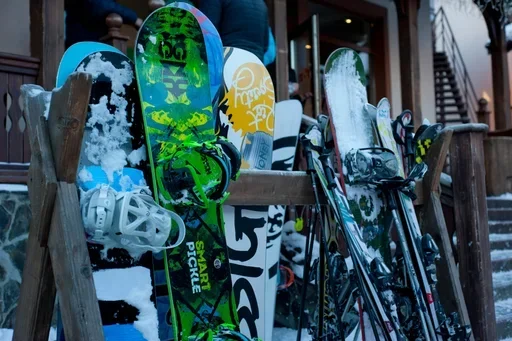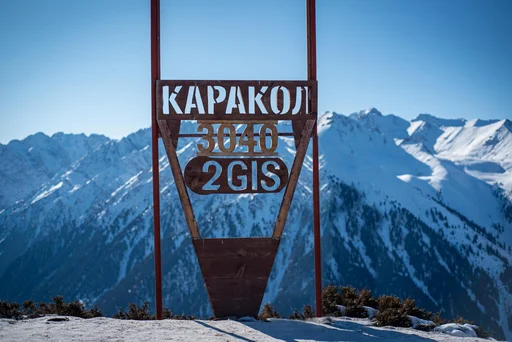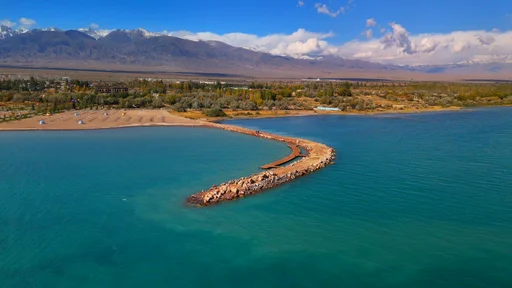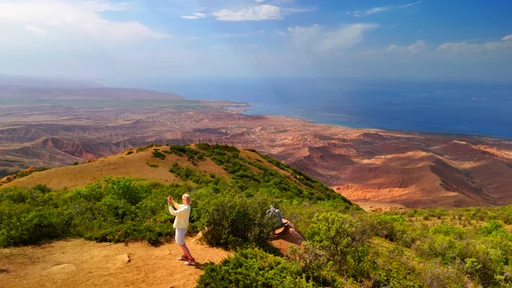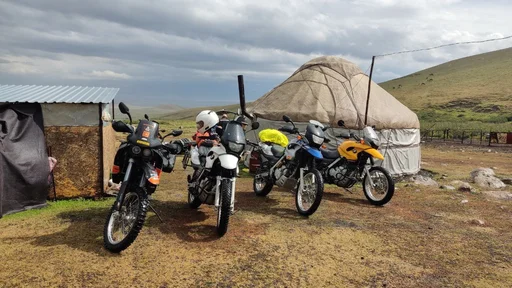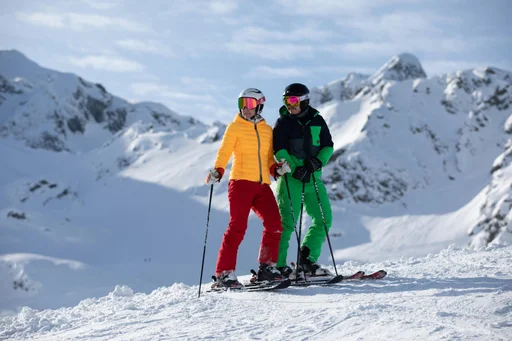Snowboarding is an exciting way to spend the winter in the mountains. For beginner riders heading to a ski resort, it’s important to prepare in advance and learn the basics. Proper gear, basic skills, and physical preparation will help you enjoy your first descents and avoid injuries. This guide provides detailed advice on choosing equipment, clothing, training, and body preparation - everything a beginner needs to start snowboarding on groomed resort slopes.
Essential equipment: board, boots, and more
A beginner will need almost the same gear as an experienced rider: a snowboard itself, special boots, bindings, as well as a protective helmet and goggles. Choosing the right snowboard is especially important. Boards come in several types (for freestyle, freeride, carving, and all-mountain models). If you are just starting out on groomed slopes, the best choice is an all-mountain snowboard, which is ideal for learning. Such boards are usually of medium stiffness and forgiving for beginners. Snowboard boots should fit snugly but be comfortable - they largely determine your comfort and board control. Boots are fastened with laces or a BOA system; the main thing is a secure ankle fit. Bindings usually come with the board (in rental or complete sets) - it’s important to adjust them properly for your stance and boot size.
In addition to the board and bindings, beginners should get protective gear. The most essential item is a helmet: never go on the slope without one. Even on easy trails and at low speeds, head injuries can happen, so a helmet is a must (some resorts won’t even let you on the lift without it). To protect your eyes, use ski goggles - they shield from bright sunlight, wind, and snow dust. On clear days, sunglasses are acceptable, but goggles are still better for riding. Beginners are also advised to wear wrist guards, knee and elbow pads, and padded shorts with hip protection - these help soften falls on hands and hips. Many beginners tend to fall backward or onto their knees, so protection greatly boosts confidence. At first, you can even use protective gear from other sports (like skateboarding or rollerblading), if you already have it. As you progress, switch to specialized winter protection - it’s designed for cold and snowy conditions.
Rent or buy: what’s best for a beginner
The question arises - should you buy your own gear or rent it? Experience shows that renting equipment for the first season is the smarter choice. For your first rides, it’s better to rent a board with bindings and boots. Firstly, it’s more economical: if you end up not liking snowboarding, or decide after a few lessons that another riding style suits you better, your pre-purchased board might not fit your needs. Secondly, rental boards for beginners are usually designed to forgive mistakes and make learning easier. Such boards are typically softer and more stable, making it easier to learn. It’s much better to spend money renting quality equipment than buying a fancy “dream board” based only on looks - and then struggle to control it.
When renting equipment, go to specialized rental shops. They usually offer a wide range of sizes and models, and staff will help you select a board and boots based on your body type and skill level. Avoid borrowing gear from friends - someone else’s equipment is likely the wrong size, weight, or stiffness, making it harder to learn. A tip: rental prices outside the resort (for example, in nearby towns) are often cheaper than at the resort itself. You can rent gear in advance in the city and bring it with you, though keep in mind the inconvenience of transportation.
Once you feel that snowboarding is “your thing” and you plan to spend many days on the slopes each winter, it makes sense to gradually buy your own gear. You don’t need to buy everything at once - start with the essentials. Experienced riders recommend getting your own boots, helmet, and goggles first. Boots are critical for comfort and must fit perfectly; helmet and goggles ensure safety and visibility, so it’s best to have personal ones. Invest in high-quality items that fit precisely - reliability on the mountain is worth it. As for the board and bindings, you can keep renting them for a while - that way, you can try different models and eventually know exactly which one you want to own. In any case, if you buy new gear, don’t forget to prepare it for the season (apply wax, adjust bindings, etc.) before your first ride.
Clothing for snowboarding: comfort and warmth
Dressing properly for the mountains is just as important as having the right gear. Beginners often worry that it will be too cold on the summit and end up wearing too many layers. As a result, they overheat while moving, sweat, and then catch a chill from the wind. Rule number one - dress in layers. Use a three-layer system: the first layer is thermal underwear that wicks moisture away from your body; the second is an insulating layer (for example, a fleece jacket); the third is an outer layer that protects from wind and moisture (a snowboard jacket and pants). This layering lets you regulate temperature: you can remove the mid-layer if you get hot, and use ventilation zippers on the jacket and pants to release extra heat.
If you’re going for just a few days and don’t want to immediately buy expensive snowboard clothing, some regular items will do for your first sessions. For example, you can ride in a waterproof synthetic down jacket or a good ski suit if you already have one. Durable trekking clothes also work. But absolutely avoid cotton and casual wear - they hold moisture and lose warmth: no jeans, wool sweaters, or cotton T-shirts on the slope! Your best friends in the mountains are modern synthetics or thin wool fabrics that retain heat even when damp and dry quickly. As soon as possible, get a basic snowboard outfit: waterproof pants and a jacket will greatly increase your comfort.
Pay special attention to accessories. Warm socks are a must (preferably special snowboard or trekking socks made of synthetics or wool, but not cotton). Gloves or mittens must be waterproof - snowboarders often touch the snow, and knitted gloves will instantly soak through. A simple wool hat is fine, as long as it fits under your helmet (or use a thin balaclava). Scarves are inconvenient in the mountains and can flap in the wind - instead, take a buff or balaclava to protect your neck and face. Don’t forget sunscreen for your face - at high altitude, sunlight reflects off the snow, and you can get sunburned even on cold days.
Learning and first steps on the slope
The best way to start learning snowboarding is under the supervision of a professional. Take lessons from a certified instructor rather than trying to teach yourself or relying on a friend. A qualified instructor will help you set the right stance, teach basic technique and safe falling, and show you how to brake and turn. Even if your friends ride well, they may have bad habits and unintentionally teach you incorrect techniques. With an instructor, you’ll progress faster and avoid many common beginner injuries. To save money, you can choose group lessons (they’re cheaper), but individual lessons are usually more effective and tailored to your personal needs.
Start practicing on gentle slopes. Choose a suitable place and time for your first runs. You don’t need to go straight to the steepest or most popular resort - crowded trails and long lift lines will only make learning harder. Ideally, find a beginner-friendly green slope or a wide gentle hill. Once you gain confidence, move on to blue trails - slightly steeper, but still forgiving for learners. Avoid heavy crowds: start riding early in the morning when slopes are freshly groomed, snow is soft, and there are fewer people. Rental shops also have more gear available in the morning, so you’ll feel more comfortable. Try to plan your first trips outside weekends and holidays when the slopes are busiest.
Monitor the weather and snow conditions. The best time to learn is when the snow is soft and powdery, with calm weather and no heavy frost or blizzards. Soft snow makes braking easier and falling less painful. Icy slopes or heavy snowfall are challenging for beginners - falls on hard snow hurt more, and visibility is poor. If the weather is bad for several days, it’s better to rest or study theory instead of risking injury on the slope.
Also, remember safety and etiquette rules on the mountain. Beginners should familiarize themselves in advance with the international FIS slope rules - they explain movement priority, overtaking, stopping, and more. Key rules include: always give way to riders below you (they can’t see you); don’t stop in the middle of the trail or in blind spots (move to the side instead); control your speed and direction to avoid collisions. Never leave your snowboard unattended without securing it - if you set it down, turn it base-up to prevent it from sliding downhill. Many riders use a leash to attach the board to their leg as a precaution. These simple measures keep both you and others safe.
Before your first run, always do a short warm-up. Five to ten minutes of simple exercises will warm up your muscles and prepare your joints. Start with your neck and shoulders: tilt your head side to side, swing your arms, and rotate shoulders and wrists. Then warm up your torso with twists and side bends. Finally, work on your legs: do a few squats, lunges forward and backward, circular knee movements, and a few light jumps. This will improve coordination and reduce the risk of muscle strain. Do it every day before riding - it takes only a few minutes but greatly increases safety.
Physical preparation for the season
Snowboarding is quite demanding physically, so it’s beneficial to prepare your body in advance. If you lead a sedentary lifestyle and suddenly start riding all day, your muscles will inevitably ache, and the risk of injury will rise. Trainers recommend starting specific exercises at least 1-2 months before your trip. Ideally, your program should include strength training for the legs and core, cardio workouts, and exercises to develop balance and flexibility. Even a couple of sessions per week make a difference: well-prepared riders learn faster, tire less, and enjoy their first descents more. Below are several basic exercises especially useful for beginner snowboarders:
Squats - the best basic exercise for your legs. Keep your back straight and feet slightly wider than shoulder-width. This strengthens your quadriceps and glutes - the main muscles used when riding, especially for turning and braking.
Plank - a static exercise for core muscles. Rest on your forearms and toes, keeping your body straight for 30-60 seconds per set. The plank strengthens your abs and back, improving balance and reducing the risk of back injuries.
Lunges with torso twist - step forward into a lunge and gently rotate your torso toward your front leg, then return. This exercise works the legs and obliques, improving coordination - essential for balance and turning control on the slope.
Jumps in place - simple two-legged jumps (you can add arm swings or 180° body rotations). They develop leg power and agility, helping you quickly change direction and stay stable on uneven terrain.
Balance exercises - any work on balance is extremely beneficial for future snowboarders. If possible, train on a balance board - stand, squat, or rotate on it while maintaining equilibrium. It strengthens the small stabilizing muscles in your ankles and core, and develops board feel. At home, you can do similar drills: stand on one leg (even with eyes closed), or practice a semi-crouched “surf stance” on a pillow.
Cardio training - good endurance lets you ride longer without fatigue. Add 2-3 cardio sessions per week: jogging, cycling, or jump rope for 20-40 minutes at moderate intensity. A strong cardiovascular system helps your muscles get more oxygen during long runs, keeping your legs from “burning out.”
Stretching and flexibility - dedicate time to stretching muscles and joints to prevent strains and injuries. Forward bends for your back and hamstrings, gentle torso twists, and hip-opening yoga poses (like “pigeon pose”) are all helpful. A flexible body absorbs falls better and allows a greater range of motion for mastering technique.
Your first snowboarding experience can shape how you feel about this sport. By preparing properly - gathering suitable gear, learning the basics, and building fitness - you’ll increase your chances of falling in love with the mountains and snowboarding from the very first run. Follow instructor advice and don’t hesitate to ask experienced riders questions: every one of them was once a beginner, too. The mountains are waiting - good luck and have an amazing time on the slopes!
Guides’ assistance and organized leisure
If you’re going on a ski tour for the first time, don’t worry - our guides and assistants will make your vacation as comfortable as possible. We’ll help you choose the best resort based on your skill level, assist with snowboard, boot, and protective gear rental, and, if necessary, arrange an instructor for your first lessons. Beyond snowboarding, we’ll take care of your leisure time too: we’ll recommend cozy cafés with mountain views, warm saunas and baths for recovery after an active day, and the best spots for evening relaxation. All you need to do is enjoy the mountains and the atmosphere of winter Kyrgyzstan.
You can also explore our tours on your own.
Related news

